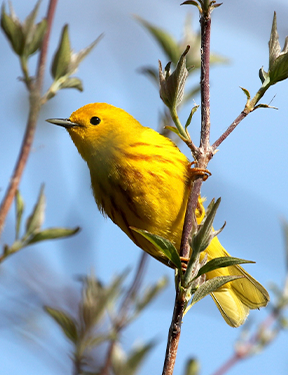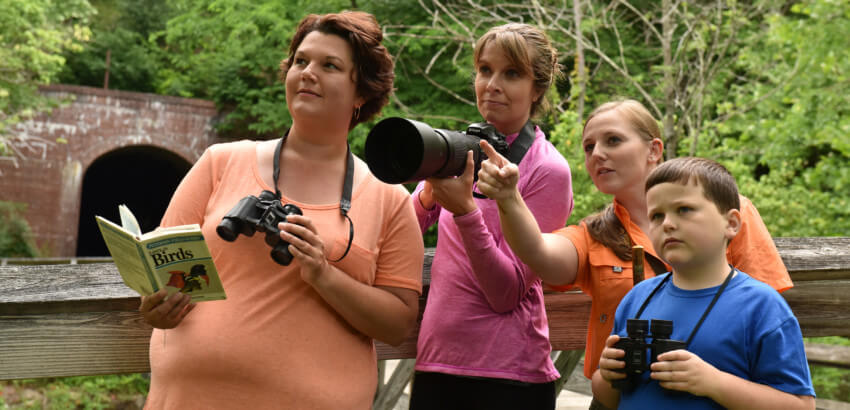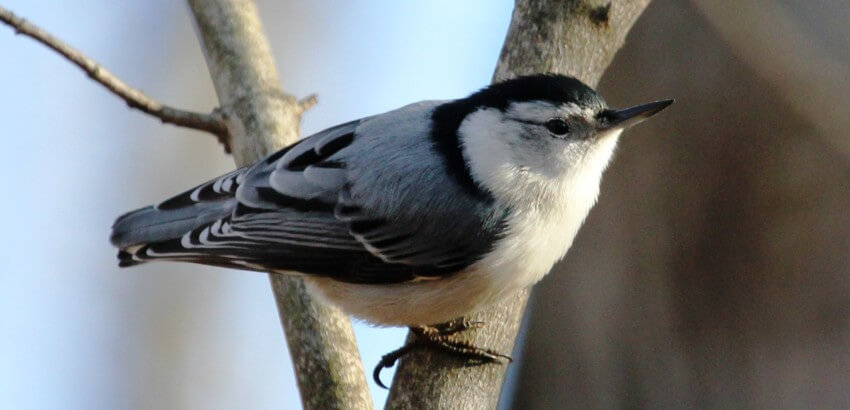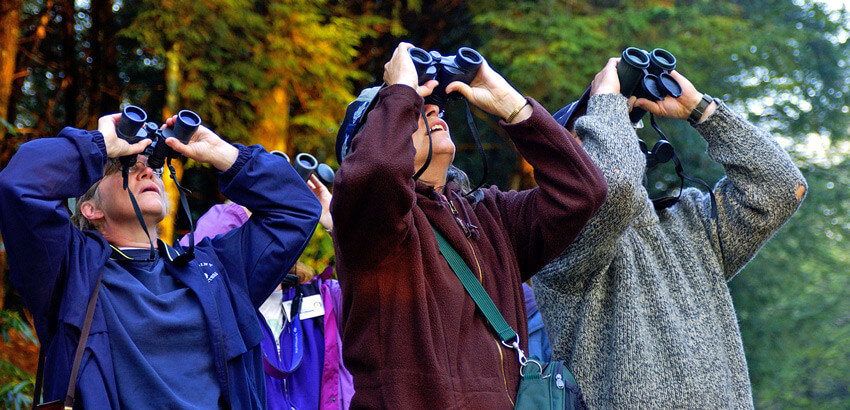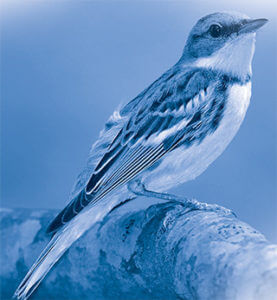
Blue Headed Vireo
Bird Watching In Greater Parkersburg
From mature forests to open meadows, from mighty rivers to quiet marshes, the region offers visitors extensive and diverse birding opportunities throughout the seasons.
In spring, the region is alive with migration. Neotropical migrants—songbirds such as warblers, vireos, tanagers, and orioles—arrive here after traveling thousands of miles from wintering grounds as far south as Bolivia. Some, such as Blackburnian warblers and blue-headed vireos, only pause here to rest and refuel before continuing north for the summer breeding season. But many others, including scarlet tanagers and cerulean warblers, stay here to nest.
Large tracts of mature forest provide important nesting habitat for many bird species that would otherwise migrate farther north for the summer. Seventeen species of warblers breed in the Greater Parkersburg area: blue-winged, northern parula, yellow, yellow-throated, pine, prairie, cerulean, black-and-white, American redstart, prothonotary, worm-eating, ovenbird, Louisiana waterthrush, Kentucky, common yellowthroat, hooded, and yellow-breasted chat.
Though in decline, ruffed grouse still breed here in our forests. Other forest breeders include Acadian and great crested flycatchers, yellow-throated and red-eyed vireos, wood thrushes, and summer and scarlet tanagers. Common ravens have become increasingly present and may in fact be breeding somewhere within the region.
Our residential areas enjoy some avian diversity as well. Red-shouldered hawks nest in many neighborhoods, as do chimney swifts and Baltimore orioles. Backyard feeders and gardens attract red-bellied and downy woodpeckers, ruby-throated hummingbirds, blue jays, Carolina chickadees, tufted titmice, red-breasted and white-breasted nuthatches, Carolina and house wrens, eastern bluebirds, American robins, gray catbirds, northern mockingbirds, cedar waxwings, eastern towhees, chipping sparrows, dark-eyed juncos, and American goldfinches. At dusk common nighthawks fly over downtown areas.
Birds of the open country, such as eastern meadowlarks, prairie warblers, white-eyed vireos, orchard orioles, red-winged blackbirds, blue grosbeaks, grasshopper sparrows, and indigo buntings, nest in our meadows, farm fields, and grasslands. Driving the area’s rural roads in May or June is a great way to enjoy some of the region’s grassland species.
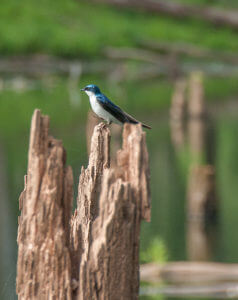
Marshes and backwaters provide nesting habitat for wood ducks, belted kingfishers, green herons, spotted sandpipers, willow flycatchers, prothonotary warblers, warbling vireos, and a variety of other water-loving birds.
Fall migration may begin as early as August, when species that summered in northern areas move south into the Greater Parkersburg region. Wading birds, such as greater and lesser yellowlegs, great egrets, and little blue herons, turn up along river edges and in wetlands and backwaters. In September and October good numbers of songbirds pass through wooded and brushy areas—many of the same species that pass through in spring. Magnolia and bay-breasted warblers, Philadelphia vireos, rose-breasted grosbeaks, and Lincoln’s sparrows make brief appearances before continuing south to their wintering areas.
With winter comes waterfowl: ducks and geese and grebes and loons. Though the numbers of individual water birds that show up here are modest compared to those of the Great Lakes, species diversity is excellent. Nearly thirty species of ducks and other waterfowl can be found along the Muskingum, Little Kanawha, and Ohio Rivers during a good winter. Expected species include snow goose; gadwall; American wigeon; northern shoveler; northern pintail; green-winged teal; canvasback; redhead; ring-necked duck; greater and lesser scaup; bufflehead; common goldeneye; hooded, common, and red-breasted mergansers; ruddy duck; common loon; and pied-billed and horned grebes. Less common species that have been found in recent years include greater white-fronted, Ross’s, and cackling geese; tundra swan; harlequin duck; white-winged, surf, and black scoters; red-throated loon; and red-necked grebe. Unusual gulls occasionally turn up as well, such as glaucous and lesser black-backed gulls.
Among the winter birding highlights of the Greater Parkersburg region are the bald eagles. These gorgeous birds congregate along the rivers from November through January, sometimes in concentrations of twenty or more. Watch for eagles perched in the trees along the rivers, especially along the backwaters and near the dams. Though bald eagles are most numerous in the Greater Parkersburg region during winter, keep an eye out for these birds throughout the year; there are several active nests in the area.
Winter is also an excellent time for sparrows. Check overgrown fields, brushy roadsides, woodland edges, or even your own backyard for American tree, field, fox, song, swamp, white-throated, and white-crowned sparrows. Some of these species spend the winter in northern United States and Canada, but move into our region to spend the winter
This is just a sampling of the numerous bird species one may find here in the Greater Parkersburg area. Whether you’re just visiting or have long called this region home, we invite you to grab a pair of binoculars and explore the Greater Parkersburg area’s diverse birdlife.
Kyle Carlsen is a freelance writer and the assistant editor of Bird Watcher’s Digest
BIRD WATCHING RESOURCES
Click here to view the all new Birding Trail Guide
Click here to view the Parkersburg Birding Field Checklist
